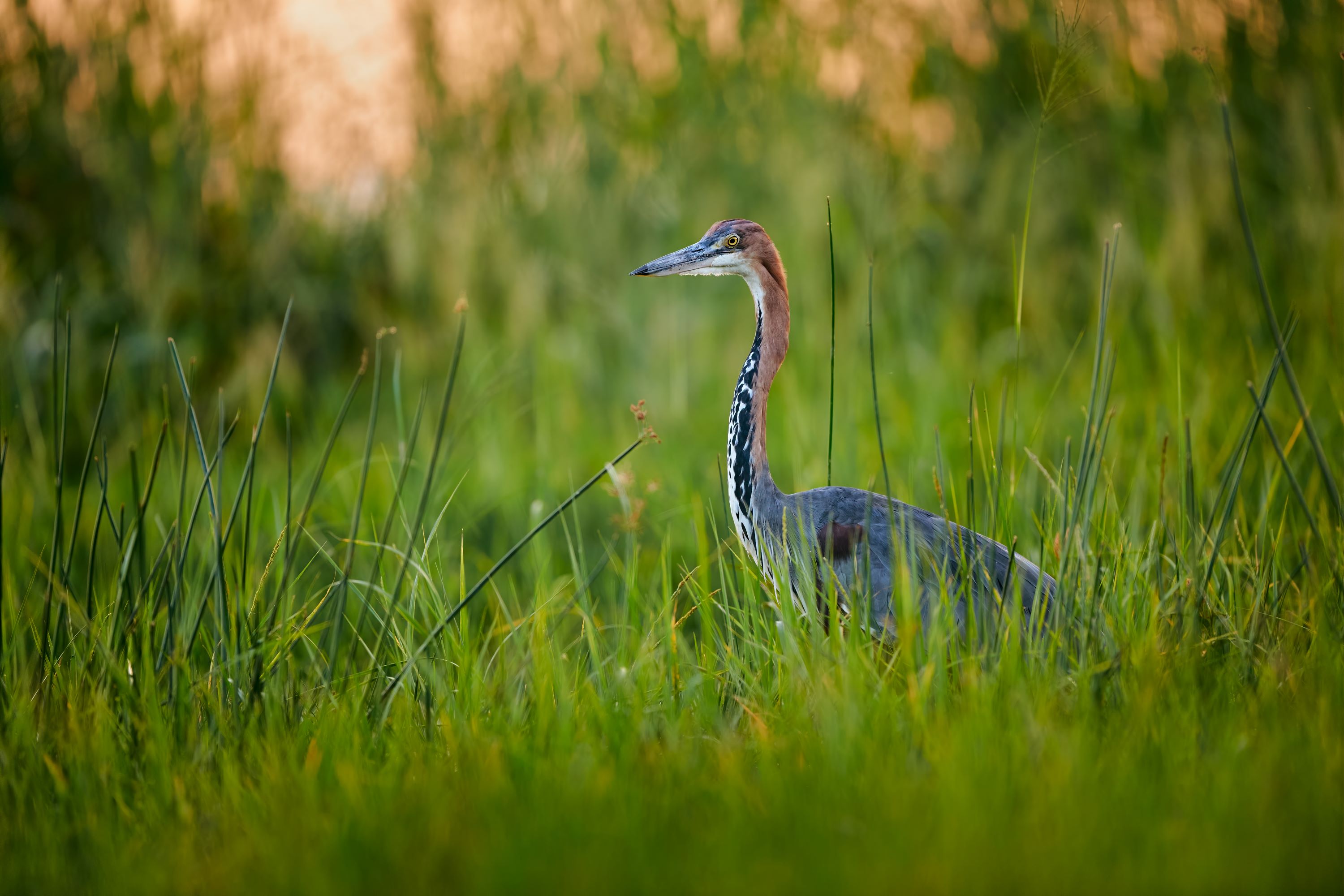
Goliath Heron: The Colossal Bird of African Waters
Introduction to the Goliath Heron
The Goliath Heron, Ardea goliath, holds the title of the world's largest heron. With its impressive size and striking appearance, this heron is a magnificent sight in the wetlands and waterways of Africa and parts of Southwest Asia.
Physical Description
Standing up to 150 cm tall with a wingspan of over 230 cm, the Goliath Heron is a true giant among birds. It has a slate-gray body, a chestnut-colored head and neck, and distinctive black-and-white stripes down its neck. The bird's dagger-like bill is perfect for fishing, its primary activity.
Habitat and Distribution
Primarily found in sub-Saharan Africa, the Goliath Heron also inhabits parts of Southwest Asia. It prefers shallow water environments, including lakes, rivers, swamps, and coastal lagoons, where it can wade to hunt.
Behavior and Lifestyle
This heron is known for its solitary nature, except during the breeding season. It is mostly diurnal, spending its days foraging in shallow waters. Despite its size, the Goliath Heron is an expert fisher, capable of catching large fish with ease.
Feeding Habits
The Goliath Heron's diet mainly consists of fish, but it also preys on amphibians, small mammals, and even other birds. It hunts by standing still in shallow water, waiting patiently before striking rapidly at its prey.
Breeding and Nesting Habits
Goliath Herons breed in solitary pairs. They build large nests, often in trees close to water. The nests are constructed from sticks and reeds, and can be reused and expanded upon in successive breeding seasons.
Egg Laying and Incubation
The female typically lays 2 to 4 pale blue eggs. Both parents share incubation duties, which last about 25 to 30 days. The high nesting sites offer protection from ground predators.
Chick Rearing and Parental Care
The chicks are born altricial and rely on their parents for food and protection. They are fed regurgitated fish and grow rapidly, learning to fend for themselves.
Vocalizations and Communication
The Goliath Heron is not a particularly vocal bird, but it does produce a range of sounds, including deep booming calls and harsh croaks, especially during the breeding season.
Conservation Status
The Goliath Heron is listed as Least Concern by the IUCN, but it faces threats from habitat destruction and degradation. Conservation efforts are focused on protecting wetland habitats and maintaining clean waterways, crucial for the heron's survival.
Similar Species and Taxonomy
Belonging to the order Pelecaniformes, the Goliath Heron is part of the Ardea genus, which includes other large herons. However, it is distinguished by its exceptional size and distinct plumage. It shares some habitat preferences with other Ardeidae family members but stands out due to its unique hunting and nesting behaviors.
The Goliath Heron in Utah
The Goliath Heron is not found in Utah or North America, as it is native to Africa and parts of Southwest Asia. In Utah, birdwatchers can observe other heron species in local wetlands.
Conclusion
The Goliath Heron, Ardea goliath, is an awe-inspiring bird that epitomizes the grandeur and diversity of African wetlands. Observing this heron in its natural habitat offers a rare glimpse into the life of one of the world's largest wading birds, highlighting the importance of preserving these environments for the survival of such extraordinary species.